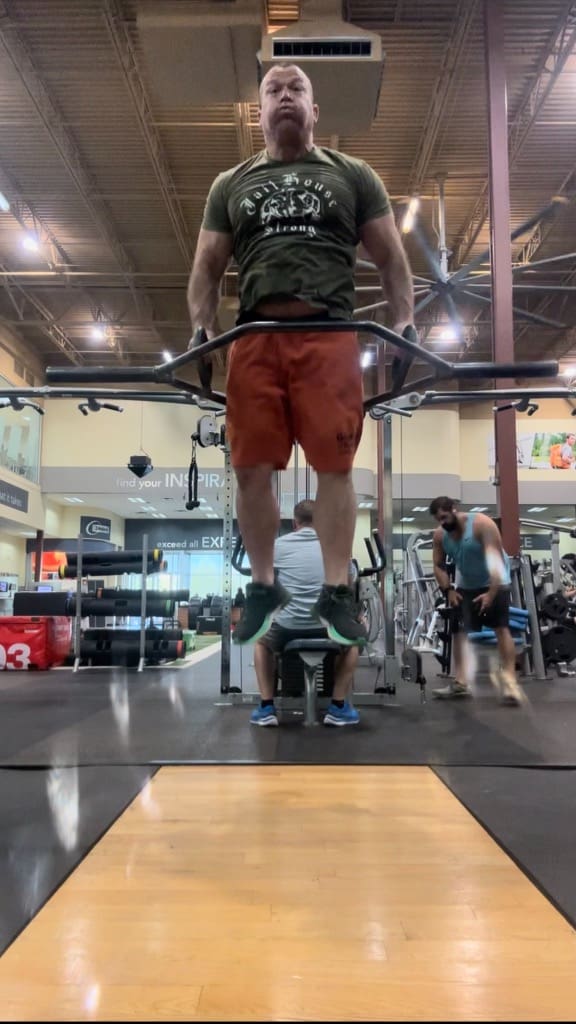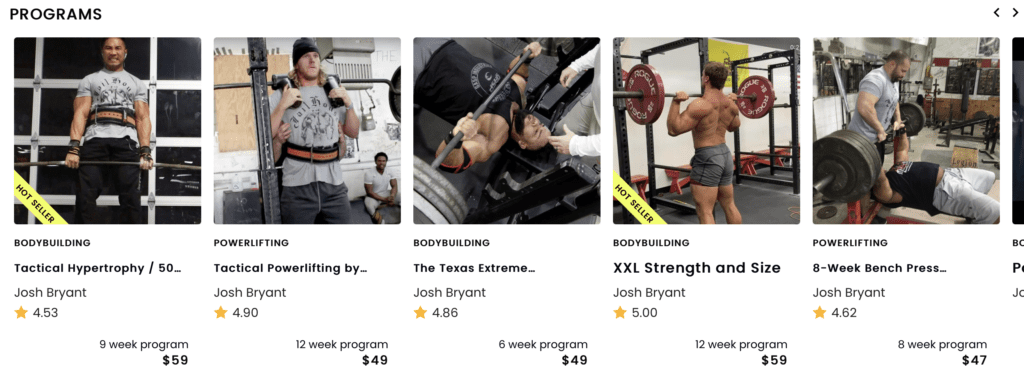Muscle Mastery: 4 Athletic Advancements
by: Josh Bryant

If you want to get those Tinder right swipes or dominate like an athlete, you better train for both muscle and performance.
Trust me, it’s the key to kicking Father Time right in the testicles.
Now, stroll into your local “strength and conditioning center” and witness the chaos of folks butchering athletic moves.
It’s like watching a comedy on fast-forward!
This is for the strength-savvy athlete aiming to train smarter, or the seasoned one making a comeback after a hiatus. Let’s get you back in the game and leave those ambulance chasers behind!
Let’s take a look at four ways to get you on the path to training and moving like an athlete again.
Strongman Training
If all you’ve been training for is the IHOP pancake sprint, you’re in for a rude awakening when it comes to real movement training! If you’ve been sitting on your keister playing fantasy football, it is a complete fantasy to think you can safely introduce sprinting into your training.
Enter strongman training, the beautiful love child of powerlifting, Olympic lifting, and bodybuilding. Strongman builds limit strength, speed strength, conditioning, grip strength and muscle hypertrophy, despite having a small learning curve and has direct applications and benefits to anything physical in life.
Strongman training is the missing link between lifting heavy stuff and moving like an athlete.
Jumping straight into high-speed activities? Not a smart move. If you’re coming from a strength background, remember, speed depends on your strength-to-bodyweight ratio (relative strength). You might be fast, but your hamstrings and tissues won’t be prepared for that velocity. The chances of injury are about as likely as your favorite exotic dancer pursuing a Ph.D. in psychology.
Strongman builds explosive power AND makes you move, but the strongman events? They’ll slow you down, save you from injury but serve as the gateway drug into full scale sprints.
Some of the best strongman movements to bridge this movement gap are:
- Farmers Walks
- Sled Drags
- Husafell Carries
- Loading Events
- Yoke
- Flipping or pulling events
The possibilities are endless! But, strongman will get you moving.
Switch Standard Strength Exercises with Supple Substitutes
Squatting is good, but you can make it even better by mixing it up. Take the Zercher position, an underutilized treasure. Uncomfortable? Hell yes. But it builds real-world bear wrasslin’ strength.
With the bar up front, your core and upper back get a smoked. Which is top-notch for resilience. Plus, it’s practical. Ever lifted a couch, moved a fridge, or 400-pound Earl out of his double wide after a night of rock gut run awry?
Zercher’s got your back.
Not to mention, it builds serious muscle in your glutes and hams.
If you’re used to pulling conventional, give wide stance sumo deadlifts some love. If you’ve been sumo deadlifting with a 9-inch range of motion forever, why not test your testicular fortitude with a low handle 3-inch trap bar deficit deadlift?
And those half-assed lunges? Swap ’em and really build your ass with some Charles Poliquin drop lunges. Train the tougher twists on classic moves, so you’re ready for anything life throws your way!
Apply this Principle to Hypertrophy Training HERE

Tempo Runs
“Tempo runs,” a conditioning method I learned from the legendary Charlie Francis, have become a staple for my tactical athletes. Basically, you use a sprint technique but only run at 60-75 of your maximum speed and use walking back as recovery.
Here’s the deal:
- Sprint 60-110 yd at 60-75% effort
- Walk back the same distance
- Repeat x times
Keep it smart, don’t push too hard – limit the volume increase to 10% weekly. Let your heart rate drop to 60% before each tempo run. Tempo runs polish your sprinting technique, amp up your aerobic conditioning, and help your body earn the right to train for high-speed sprints.
Train Like a Tactical Athlete HERE

Medicine Ball Throws
Medicine ball training was not spawned on a 1980s Tony Little infomercial. It is one of the original tools used by ancient Greeks and Persian Wrestlers to improve speed, explosive power and health.
Keep in mind, force = mass x acceleration, so, yes, you must get stronger while lifting more weight but don’t ignore the acceleration part of the equation. Medicine balls are one of the most effective ways to increase force production via training acceleration.
Barbell movements are performed in one plane motion but with a medicine ball power can be built in the frontal, sagittal and the transverse planes. This is important for balance in training but essential for rotational athletes like pitchers, boxers and shot putters.
Everything in training is on the to risk-to-benefit continuum; our goal is to minimize the risk and maximize the benefit. For inexperienced trainees without a high level of foundational strength, throwing medicine balls can safely teach these athletes how to accelerate, thus increasing explosive power. Medicine balls additionally offer benefits to the most elite athletes.
Remember, you are using medicine balls for explosive strength. Perform two sets of six reps of the following movements with a medicine ball twice weekly, athletes new to lifting can start with a four-pound medicine ball, stronger athletes with eight pounds.
Final Thoughts
Life exists outside the “big three”. Rome wasn’t constructed overnight, and you didn’t turn into a couch potato in a day.
Take it slow, incorporate these tactics, and we’ll have you moving and training like a finely-tuned athlete again.
Give one of Josh’s Programs a shot that integrates these principles HERE.

